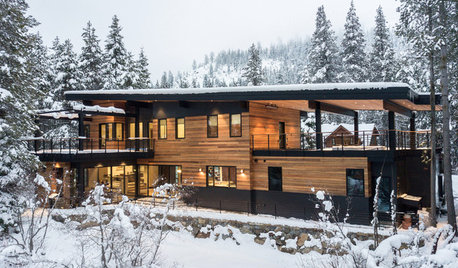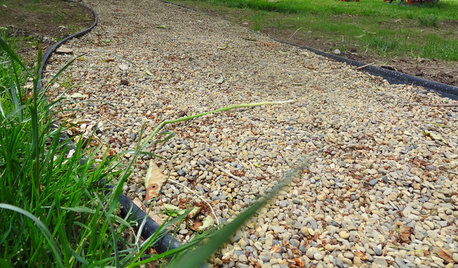Gravel road maintenance
dethride
18 years ago
Related Stories

REMODELING GUIDESGravel Driveways: Crunching the Pros and Cons
If you want to play rough with your driveway, put away the pavers and choose the rocky road
Full Story
LANDSCAPE DESIGNEnjoy the Romance of Dining in a Classic Gravel Garden
Here’s what to consider when it comes to installing, styling and maintaining a DIY-friendly gravel patio
Full Story
MOST POPULARA First-Time Buyer’s Guide to Home Maintenance
Take care of these tasks to avoid major home hassles, inefficiencies or unsightliness down the road
Full Story
SUCCULENTSAmazingly Low-Maintenance Picks for Outdoor Planters
Turn to succulents, cacti and ornamental grasses to keep your summer watering and care to a minimum
Full Story
MONTHLY HOME CHECKLISTSYour Fall Home Maintenance Checklist
Prep your house and yard for cold weather with this list of things to do in an hour or over a weekend
Full Story
KITCHEN CABINETS9 Ways to Get Low-Maintenance Kitchen Cabinets
Save valuable elbow grease and time with these ideas for easy-to-maintain cabinets
Full Story
MONTHLY HOME CHECKLISTSYour Winter Home Maintenance Checklist
Keep your home and yard safe and running smoothly as temperatures drop and activity moves indoors
Full Story
LANDSCAPE DESIGN5 Gravel and Stone Types for a Rockin' Landscape
Give your garden design some textural bam with pebbles, granite, river rocks and other permeable materials
Full Story
GARDENING AND LANDSCAPINGDIY Pathway Puts Landscapes on the Right Track
Create a road more traveled in your backyard, and save your lawn from foot traffic, with this easy, affordable gravel path
Full Story
TINY HOUSESAdventure Seekers Hit the Road in a Cozy School Bus Home
Wood floors, butcher block countertops, custom furnishings and LED lights make life on the road feel like just another stylish day at home
Full Story





ruthieg__tx
growernut
Related Professionals
Birmingham Landscape Architects & Landscape Designers · Harvey Landscape Architects & Landscape Designers · Framingham Landscape Contractors · National City Landscape Contractors · Oakland Landscape Contractors · South Lyon Landscape Contractors · View Park-Windsor Hills Landscape Contractors · Claremont Fence Contractors · Corona Fence Contractors · Killeen Fence Contractors · North Hollywood Fence Contractors · Prior Lake Fence Contractors · Bethany Decks, Patios & Outdoor Enclosures · Hobart Decks, Patios & Outdoor Enclosures · Marlboro Decks, Patios & Outdoor Enclosuresnarcnh
brendasue
ladybug1
judyag_44
goodhors
growernut
drjohnbender_live_com